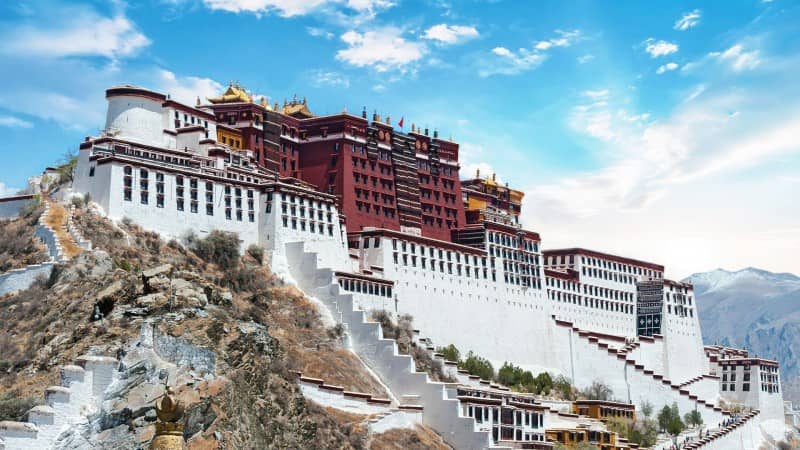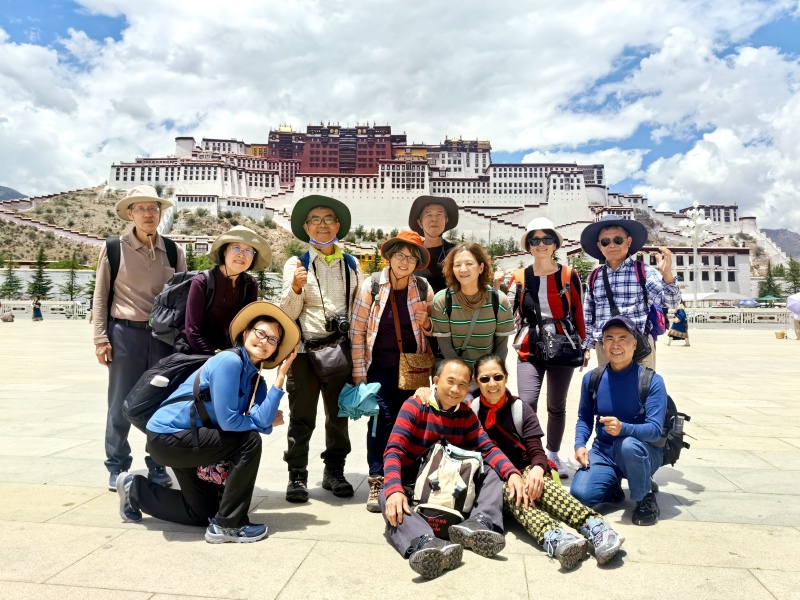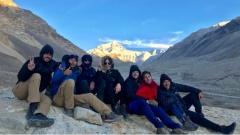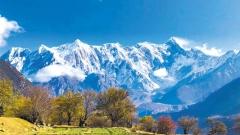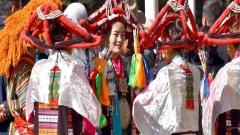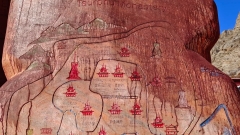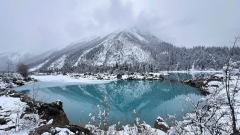Rising majestically above the heart of Lhasa, the Potala Palace is one of the most remarkable architectural and cultural wonders in the world. This vast fortress-palace, once home to Tibetan kings and Dalai Lamas, is a living symbol of Tibetan Buddhism, history, and art. Today, it welcomes travelers from across the globe, offering a rare glimpse into the spiritual and political life of Tibet.
What is the Potala Palace and Why is it Called “Potala”?
The Potala Palace began as the royal seat of King Songtsen Gampo in the 7th century, and centuries later became the winter residence of the Dalai Lamas, the spiritual leaders of Tibetan Buddhism. Today, it stands as a museum, UNESCO World Heritage Site, and pilgrimage destination.
Its name is inspired by Mount Potalaka, the mythical home of Chenrezig (Avalokiteshvara), the Bodhisattva of Compassion. Tibetans believe that King Songtsen Gampo and the Dalai Lamas are human manifestations of Chenrezig — making their residence a sacred place filled with blessings.
Where is the Potala Palace Located?
Perched on Red Hill in central Lhasa, the Potala Palace dominates the city skyline. Its address is 35 Beijing Middle Road, Chengguan District, Lhasa, in the Tibet Autonomous Region of China.
- From Lhasa Gonggar International Airport: About 1 hour by car (58 km)
- From Barkhor Street: Around 30 minutes on foot
- From Lhasa Railway Station: 15–20 minutes by car
Its location on Red Hill was chosen for both defensive advantage and panoramic views over the Lhasa Valley.
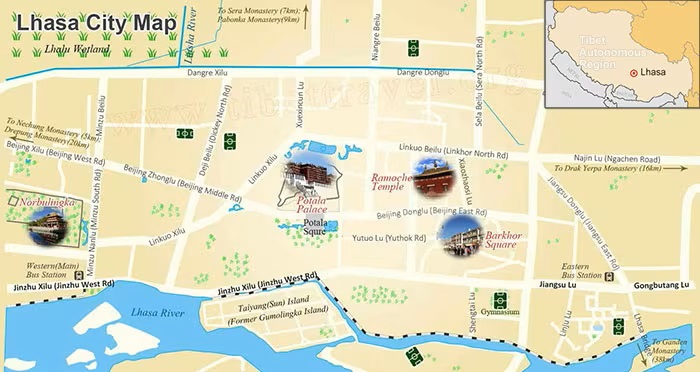
Lhasa City Map
A Journey Through History — When Was Potala Palace Built?
The Early Structure (7th Century)
Around 635 AD, King Songtsen Gampo ordered the construction of a palace on Red Hill shortly after moving Tibet’s capital to Lhasa. This early structure was far smaller than the palace you see today.
The Grand Expansion (17th Century)
In 1645, the Fifth Dalai Lama began an ambitious project to rebuild and expand the palace. By 1649, the White Palace was complete, serving as the Dalai Lama’s residence and government offices.
Following the Fifth Dalai Lama’s passing, Regent Sangye Gyatso added the Red Palace in 1693, dedicated to spiritual functions and religious relics. Over the next centuries, golden rooftops and auxiliary buildings were added.
Final Additions (20th Century)
By 1936, after the stupa of the 13th Dalai Lama was completed, the Potala Palace had reached the form visitors recognize today.
Why the Potala Palace is World-Famous
- Altitude & Scale: Standing 3,700 meters (12,100 ft) above sea level and rising 115.7 meters above Red Hill, Potala is the highest palace in the world.
- Architecture: Over 1,267 rooms spread across 130,000 m², blending Tibetan, Han Chinese, and Nepalese styles.
- Cultural Significance: Once the epicenter of both political and spiritual life in Tibet.
- UNESCO Recognition: Listed as a World Heritage Site in 1994 for its architectural brilliance and cultural importance.
Why Was Potala Palace Built?
Romantic folklore claims King Songtsen Gampo built the palace to welcome his bride, Princess Wencheng. However, historical evidence suggests it was built years earlier as a symbol of royal authority and a secure political center.
Its location offered defensive advantages and sweeping views of the Lhasa Valley, making it ideal for both governance and symbolism.
Who Lives in the Potala Palace Today?
The palace is now a museum, with a small number of monks and staff who maintain the building and preserve its artifacts. Most areas are open only to visitors and pilgrims during official hours.
Potala Palace Architecture: The Red and White Palaces
White Palace
- Former living quarters of the Dalai Lamas
- Government offices and audience halls
- Symbolizes peace, purity, and compassion
Red Palace
- The spiritual heart of the complex
- Houses stupas of past Dalai Lamas
- Contains sacred chapels, murals, scriptures, and relics
- Symbolizes wisdom, power, and the spiritual authority of Tibetan Buddhism
Decorative elements include golden roofs, black window frames, and traditional Tibetan-Han fusion details that make the structure gleam under Lhasa’s intense sunlight.
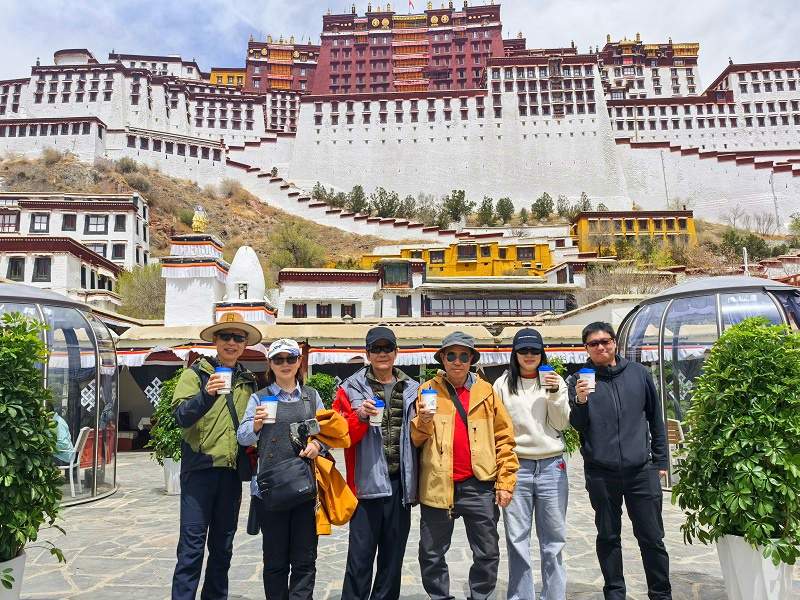
Potala Palace
Inside the Potala Palace — What You’ll See
- Holy Funeral Stupas of eight Dalai Lamas
- Precious Chapels containing revered Buddhist relics
- Exquisite Murals & Thangkas depicting Tibetan history
- Historic Government Halls from the days of the Dalai Lama’s political role
Visitor Information — Tickets, Timing, and Limits of Potala Palace
- Ticket Price: RMB 200 (May–October), RMB 100 (November–April)
- Booking: Must be reserved in advance via the palace’s official WeChat account
- Daily Visitor Limit: About 2,300 people, with fixed entry times
- Visit Duration: One hour inside the main building, but 3–4 hours to explore surrounding areas
Best Time to Visit Potala Palace
Spring (April–May)
- Mild weather, fewer crowds, peach blossoms in nearby Nyingchi
Summer (June–August)
- Lively festival season, greener landscapes, highest oxygen levels
Autumn (September–October)
- Clear skies, ideal for photography, comfortable temperatures
Winter (November–March)
- Quiet, discounted rates, intimate experience with fewer visitors
Altitude and Physical Challenge of Potala Palace
Visiting both palaces involves about 1,000 stone steps. While most travelers manage without issue, acclimatize for 1–2 days in Lhasa beforehand, walk slowly, and rest as needed.
Best Photography Spots of Potala Palace
- Chakpori Hill: Classic 45° view (as seen on the 50 RMB note)
- Potala Palace Square: Grand frontal perspective
- Zongjiao Lukang Park: Reflection shots on calm days
Tibetan Pilgrimage — The Kora Around Potala
Locals walk clockwise around Potala Palace, spinning prayer wheels and chanting mantras — a ritual known as kora. Visitors are welcome to join respectfully.
Etiquette and Cultural Respect for Potala Palace
- Dress modestly; remove hats/sunglasses inside chapels
- Keep voices low; avoid touching relics
- Walk clockwise around the palace and pilgrimage circuit
- Photography is prohibited inside sacred areas
Plan Your Potala Palace Itinerary with Ease
Exploring Potala Palace is a highlight of any Tibet journey, but the ticketing process, entry limits, and cultural etiquette can be challenging for first-time visitors.
China Dragon Travel offers expertly guided Potala Palace tours that include advance ticket booking, local cultural insights, and assistance with photography spots — ensuring your visit is both smooth and deeply enriching.



